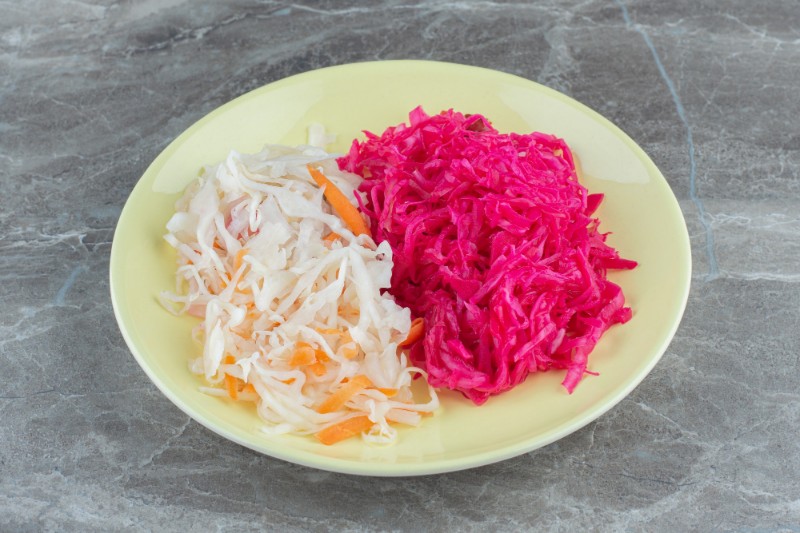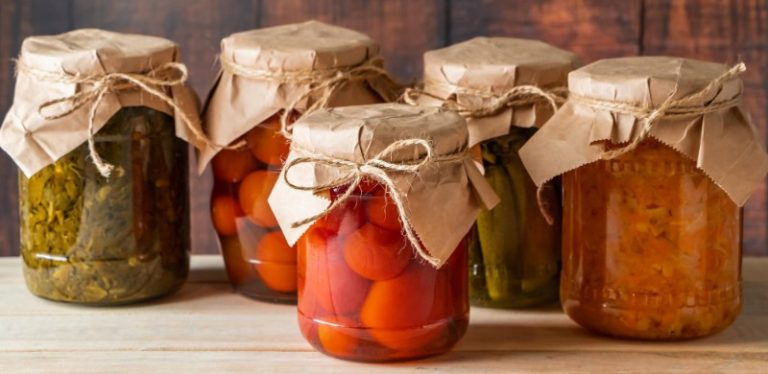You might not have heard of lacto fermentation before, but you may be familiar with foods such as kimchi, pickles, kefir, olives, and sauerkraut. If at least one of these products rings a bell, you should know that it is a “lacto-fermented food.” But what does that mean? And why should you know about it?
We collected everything you need on the subject in this essential guide. So, read on to find out more about Lacto fermentation, its processes, and the health benefits that come with it.
What is Lacto Fermentation?
Let’s go straight to the core of the question to eliminate all of your doubts. You may not know this, but the truth is that there are several types of food fermentation, and “Lacto” is only one of them.
As the name suggests, it uses bacteria to break down the carbohydrates in the food (such as sugar) ad convert them into lactic acid (the one you can find in milk). The resulting substance removes the harmful bacteria (and inhibits their growth) from the food and preserves the ingredients’ flavor, texture, and nutrients. Also, Lacto fermentation contributes to increasing the food’s digestibility (jump to the section on the health benefits of this practice to learn more about the positive impact of consuming these foods). Examples of food that result from this process include kefir, yogurts, sourdough bread, kimchi, and most pickled veggies.
Most vegetables work well for Lacto-fermentation, but their taste and texture will change. Some of the best options include beets, cabbage, and carrots, but as long as the veggies are eatable raw, you shouldn’t have any issues!
Lacto-fermentation is an anaerobic process, meaning that it doesn’t require oxygen. So, to increase your chances of success, take measures to prevent it from “attacking” your food. After all, oxygen can make the environment susceptible to mold and yeast, making the food unsuitable for consumption.
To learn more about the process, jump to the following section: we collected all you need to know about fermenting your food using this method!
How Does it Work?
If the definition of the process hasn’t convinced you, don’t worry: you’ll get a much better understanding by learning about how Lacto fermentation works. One of the best ways to use Lacto fermentation is to submerge vegetables that naturally contain lactic acid bacteria (cucumbers, broccoli, carrots, and cabbage are excellent examples) in water and salt solution. The latter kills most harmful bacteria to allow only the “lactic acid” ones to survive into the next phase, where they will convert sugars into lactic acid.
The environment that results from such a process is acidic and will preserve the vegetables you submerged (and give them the distinctive but delicious tangy flavor).
You won’t have to add bacteria to the mixture, as the veggies are usually full of lactic acid. But you can speed up the fermentation by adding bring or lactic acid for vegetable cultures to your jars.
Don’t forget that salt plays a crucial role in the success of the process: it promotes the development of beneficial bacteria while limiting harmful ones. Use a product free of iodine and other agents for best results (and to avoid altering the taste). Remember to use enough salt to allow the food to ferment. There should be at least 2% of the weight in vegetables in salt. And if you want to keep the fermentation going longer, add more salt.
Remember to seal your jars to minimize the entrance of oxygen. Also, keep an eye on the vegetables: submerge them in the liquid for best results. Maintain your food at home temperatures to maintain optimal rhythms of fermentation. And if it is your first time with Lacto-fermentation, move your food inside the fridge after a week.
You can also allow sourdough or milk to ferment, but you’ll need t starter culture to ensure the process is safe and that the flavors will be consistent. Use a sealed container to minimize exposure to oxygen and get the best taste out of the fermentation. And be patient: depending on what you will be making, the process may take a couple of days and up to two or three months.
But beware: despite sounding similar, fermentation isn’t the same as canning. For instance, it won’t work for more than two months. With fermentation, you will have to consume the foods you prepare when they have reached the flavor you desire and before their shelf life expires. Instead, canning allows you to sterilize the environment and will preserve food for even more than one year.
Of course, you can slow the fermentation by storing the food in a cool place. However, that won’t prevent spoilage or an alteration in the taste.

What Are The Health Benefits of Lacto Fermentation?
Besides the preservation characteristics, lactic fermentation also provides health benefits. After all, it is an inexpensive and effective way to keep food “eatable” for longer. But it is also a process that (because of the compound that lactic acid bacteria produce) could enhance the benefits of the “original” ingredients.
Not for anything, kimchi and kefir (two Lacto-fermented products) are worldwide known for being among the healthiest food on the planet.
Their characteristics are associated with improved blood pressure and reduced inflammation (among many other things, as you’ll see later). Also, some studies suggest their links with cancer risk reduction, elimination of inflammation, infections, and obesity. The same applies to some dairy products, sauerkraut, and olives, which also result from the process of Lacto-fermentation.
If you have heard of the role probiotics play in humans’ diet, all of this might sound familiar. That’s because, similarly to those products, Lacto-fermented food supports the gut and immune system function. Also, they increase the nutrient availability in food, making minerals such as iron more easily absorbable in the body. Additionally, they seem to improve brain function (and reduce the risk of contracting Alzheimer’s disease), can help to control weight loss, and might reduce the symptoms of lactose intolerance. So, overall, Lacto-fermentation can provide plenty of health benefits.
Resource List https://www.healthline.com/nutrition/lacto-fermentation https://www.thespruceeats.com/how-lacto-fermentation-works-1327598 https://culturesforhealth.com/blogs/learn/natural-fermentation-what-is-lacto-fermentation https://revolutionfermentation.com/en/blogs/fermented-vegetables/how-to-make-a-lacto-fermentation/
© 2016-2022 by Homemade.us. All rights reserved. No part of this document may be reproduced or transmitted in any form or by any means, electronic, mechanical, photocopying, recording, or otherwise, without prior written permission of Homemade.us.

Leave a Reply